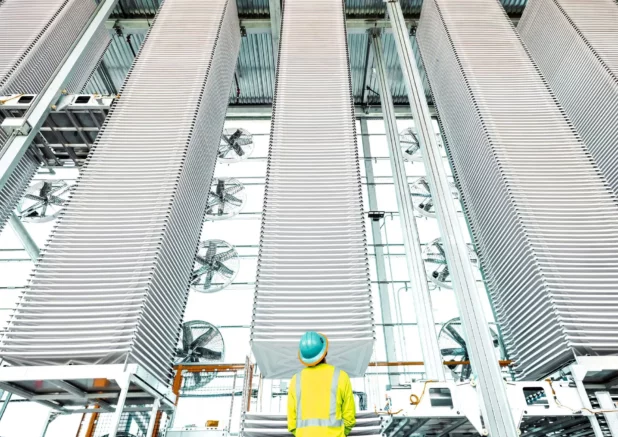Net Zero: The World Economic Forum touts ‘carbon removal plants’—each of which removes five million tonnes of CO2 from the atmosphere each year—as “crucial to meeting global climate goals”, despite the fact that CO2 currently makes up just 0.04% of the atmosphere, and if it drops… pic.twitter.com/0upMDmSvhT
— Wide Awake Media (@wideawake_media) November 23, 2023
Atmospheric physicist, Dr. Richard Lindzen, dispels the myth that CO2 is a pollutant:
“Let’s say some genius comes up with a method to get rid of 60% of the CO2. What will be the wonderful consequence of that? The death of all animals, the plants have died, there’s no food. What… pic.twitter.com/oPr0SF878E
— Wide Awake Media (@wideawake_media) November 22, 2023
“[CO2] is hardly a poison…If you could get rid of 60% of the CO2, roughly, we’d all be dead. So this is a very strange ‘pollutant’,” says Richard Lindzen, professor emeritus of meteorology at MIT.
“It’s essential for plant life. It’s the basis for photosynthesis…” pic.twitter.com/UbZJCWNCPy
— Jan Jekielek (@JanJekielek) November 21, 2023
There has never been any attempt to prove that CO2 causes warming.
There is no evidence for the theory. What they have is a bunch of fake graphs, and a “scientific consensus” from “climatologists.” Climatology is a fake science invented by the UN to promote the theory of global warming.
However, despite skipping the step of proving global warming is real, the government has decided to take the extraordinary step of geo-engineering the planet, sucking carbon out of the atmosphere.
This will probably kill all life on earth.
In Texas, oil and gas producer Occidental Petroleum is constructing a giant facility to suck 500,000 metric tons of carbon dioxide out of the atmosphere annually to keep it from warming the climate, a project backed by hundreds of millions of dollars from investment firm BlackRock.
BlackRock, eh?
Interesting.
In Louisiana, a consortium of companies that includes Swiss firm Climeworks is teaming up to build a similar facility that can pull a million metric tons of the greenhouse gas out of the sky each year, boosted by hundreds of millions of dollars in grants from the U.S. government.
The direct air capture (DAC) projects are in neighboring states, but the companies leading them are worlds away when it comes to their views on how carbon removal – an expensive and largely unproven family of technologies to fight or even reverse global warming – should be deployed in a climate-friendly future and the role oil and gas should play in its deployment.
Occidental says some of its carbon would be injected into oil fields to ramp up pressure and raise crude production – a strategy it says that can cleanse the world’s future fossil fuel consumption of climate impact.
Climeworks and its partner Heirloom, meanwhile, says its carbon will go straight into underground storage, and that the technology must go hand in hand with a transition to renewable energy.
The clashing philosophies mirror a global debate underway over the role carbon removal technologies should play to keep the world from exceeding a 1.5 degree Celsius rise that will take center stage at the 28th United Nations climate change conference in Dubai on Nov. 30-Dec. 12.
…
The IEA says DAC would have to capture as much as 1 billion metric tons annually by 2050 if the world is to hit its decarbonization targets, a massive scale-up from the 10,000 metric tons it removes currently.
A major concern is that DAC technology is both expensive and unproven at scale. Capturing carbon using DAC costs somewhere between $600 and $1,000 for each metric ton, mainly because of the huge amount of energy required to run the equipment.
There are two commercial DAC facilities now in operation – a Climeworks project in Iceland that can capture just 4,000 metric tons of CO2 a year and Heirloom’s project in California that can capture 1,000 metric tons annually, with the rest of the emissions removed by DAC attributed to small pilot projects.
More than 100 other DAC projects are at various stages of development, but it is unclear how many will be completed or when, or how they would survive financially.
You know, if you wanted to remove CO2, you could just plant trees.
All living things on earth are “carbon-based lifeforms,” and trees use the carbon in the air to grow.
That has never been suggested.
A person looks at stacks of trays holding treated limestone, used to absorb CO2 from the air, at Heirloom’s new plant in Tracy, California.

